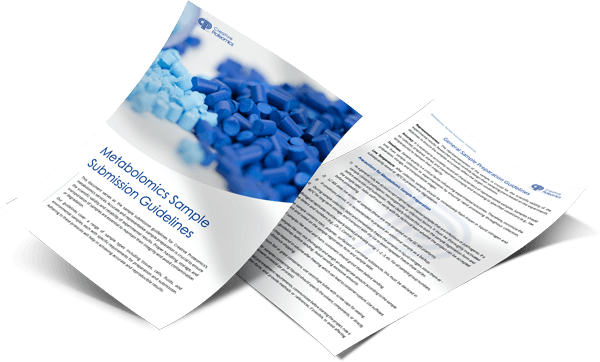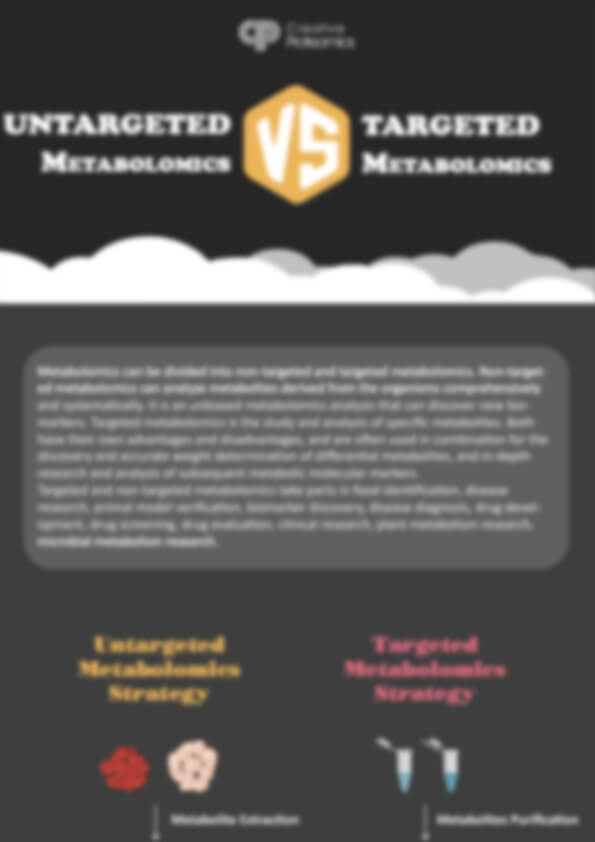Isovaleric Acid Analysis Service
Creative Proteomics provides isovaleric acid analysis using advanced LC-MS/MS and GC-MS platforms. We offer comprehensive metabolite profiling, enabling researchers and industries to study metabolic pathways, monitor fermentation processes, ensure product quality, and assess microbial activity. Our solutions deliver actionable insights for pharmaceutical, food and beverage, biotechnology, and environmental applications.
Submit Your Request Now
×- What We Provide
- Advantages
- Technology Platform
- Sample Requirements
- FAQ
- Publications
What is Isovaleric Acid?
Isovaleric acid (3-methylbutanoic acid) is a branched-chain short-chain fatty acid (BCFA) produced during leucine catabolism. This metabolite is integral to energy metabolism and microbial fermentation processes. Beyond its biochemical significance, isovaleric acid is a key flavor compound in fermented foods (e.g., cheese, wine) and a critical indicator in microbiome studies, where it reflects microbial activity and substrate utilization. Its quantification is essential for optimizing industrial processes and advancing research in metabolic pathways and microbial ecology.

Isovaleric Acid Analysis Service Offered by Creative Proteomics
- Isovaleric Acid Quantification: Accurate measurement of isovaleric acid in biological samples (serum, plasma, tissues) and industrial samples (fermented foods, beverages).
- Metabolic Pathway Mapping: Analysis of leucine degradation intermediates, including β-hydroxyisovaleric acid and isovaleryl-CoA derivatives, to study metabolic pathways.
- Microbiome Profiling: Quantification of microbial fermentation products to study gut, soil, or industrial microbiome dynamics.
- Food & Beverage Quality Control: Monitoring of isovaleric acid and related compounds to ensure product consistency and optimize fermentation protocols.
- Pharmaceutical Research: Tracking metabolic shifts in drug development and toxicology studies.
- Environmental Monitoring: Analysis of isovaleric acid levels as a biomarker for organic compound degradation in ecosystems.
List of Isovaleric Acid and Related Metabolites
| List of Isovaleric Acid and Related Metabolites | ||||
|---|---|---|---|---|
| Isovaleric Acid (IVA) | Isovaleryl-CoA | 3-Methylcrotonyl-CoA | 3-Hydroxyisovaleric Acid | 2-Methylbutyryl-CoA |
| Methylmalonic Acid | Acetyl-CoA | Isovalerylglycine | 3-Methylbutyrate | 2-Methylbutyrate |
| 2-Hydroxyisovaleric Acid | 2-Ketoisovaleric Acid | 2-Methylbutanoyl-CoA | Valeric Acid | |
Advantages of Isovaleric Acid Assay
- High Sensitivity and Precision: Detection limit as low as 1 ng/mL with coefficients of variation (CV) below 5% using LC-MS/MS or GC-MS.
- Comprehensive Metabolite Coverage: Simultaneous quantification of isovaleric acid and over 20 related metabolites with isotope-labeled standards.
- Advanced Analytical Platforms: High-resolution analysis using Triple Quadrupole and Orbitrap mass analyzers with ppm-level accuracy.
- Customized Solutions: Tailored assay designs and expert support for data interpretation and metabolic pathway analysis.
- High Throughput Capabilities: Capable of analyzing up to 500 samples per batch for large-scale studies.
- Low Matrix Interference: Advanced sample preparation techniques minimize matrix effects, ensuring accurate results.
- Stable and Reproducible Results: Strict quality control procedures ensure inter-batch variability below 10%.
- Method Validation Support: Full method development and validation services available, including linearity, accuracy, precision, and recovery assessments.
- Data Visualization and Interpretation: Comprehensive data analysis with graphical representations for clear interpretation of metabolic changes.
Technology Platforms for Isovaleric Acid Analysis Service
HPLC-UV (High-Performance Liquid Chromatography with UV Detection)

Agilent 1260 Infinity II HPLC (Figure from Agilent)
GC-MS (Gas Chromatography-Mass Spectrometry)

Agilent 7890B-5977B (Figure from Agilent)
LC-MS/MS (Liquid Chromatography-Tandem Mass Spectrometry)

SCIEX Triple Quad™ 6500+ (Figure from Sciex)
LC-MS

Q Exactive™ Plus Hybrid Quadrupole-Orbitrap™ Mass Spectrometer (Figure from Thermo)
Sample Requirements for Isovaleric Acid Analysis Service
| Sample Type | Minimum Volume | Storage Condition | Additional Notes |
|---|---|---|---|
| Plasma | 50 µL | -80°C | Use EDTA or heparin as anticoagulant |
| Serum | 50 µL | -80°C | Avoid hemolysis for accurate results |
| Urine | 100 µL | -80°C | First morning urine preferred |
| Tissue Homogenate | 50 mg or 100 µL | -80°C | Flash freeze in liquid nitrogen |
| Fermentation Broth | 1 mL | -20°C to -80°C | Ensure proper mixing before sampling |
| Cell Culture Medium | 1 mL | -80°C | Collect in sterile tubes |
| Feces | 50 mg | -80°C | Store without preservatives |
| Soil or Environmental Sample | 1 g | -20°C | Air-dry or freeze immediately |
| Microbial Culture | 1 mL | -80°C | Centrifuge to separate supernatant if needed |
Applications of Isovaleric Acid Assay Service
Metabolic Research
Investigate leucine catabolism, related metabolic pathways, and biochemical regulation for a deeper understanding of metabolism.
Microbiome and Environmental Studies
Analyze microbial fermentation products in gut microbiomes, soil, and water samples to evaluate microbial activity and ecosystem dynamics.
Food and Beverage Quality Control
Monitor flavor compounds and volatile fatty acids to ensure product consistency, detect spoilage, and optimize fermentation processes.
Pharmaceutical and Biomedical Research
Track metabolic changes in drug development, toxicology studies, and biomarker discovery.
Industrial Biotechnology
Assess fermentation performance, monitor byproducts, and optimize bioprocessing efficiency for industrial-scale production.
Agricultural and Nutritional Studies
Evaluate the effects of dietary interventions, livestock health, and agricultural practices on metabolic outputs and microbial activity.
Demo
FAQ of Isovaleric Acid Analysis Service
How do you handle complex sample matrices like fermented foods or microbial lysates to ensure accurate quantification of isovaleric acid?
We employ matrix-specific pretreatment protocols to isolate isovaleric acid from interfering substances. For high-fat matrices (e.g., cheese), we use solid-phase extraction (SPE) with C18 cartridges and lipid-absorbent resins to remove triglycerides. For microbial lysates, enzymatic digestion (e.g., lysozyme treatment) followed by centrifugation ensures complete cell lysis and metabolite release. All workflows are validated with isotope-labeled internal standards (d₅-isovaleric acid) to correct for recovery efficiency and matrix effects.
What experimental design recommendations do you have for longitudinal studies tracking isovaleric acid dynamics in microbiome research?
For longitudinal studies, we recommend:
- Consistent sampling intervals: Collect samples at fixed timepoints (e.g., 0, 24, 48 hours post-intervention) to capture microbial metabolic shifts.
- Parallel negative controls: Include sterile culture media or placebo-treated samples to distinguish background noise.
- Triplicate aliquots: Minimize batch variability by splitting samples into triplicates for independent analysis.
- Metadata integration: Provide detailed logs of environmental conditions (pH, temperature) and microbial load to correlate with isovaleric acid levels.
Can you quantify trace-level isovaleric acid in air or headspace samples from industrial fermentation reactors?
Yes. We utilize thermal desorption tubes (Tenax TA/Carbograph adsorbents) to capture volatile isovaleric acid from gas-phase samples. Post-collection, analytes are desorbed at 300°C and analyzed via Agilent 7890B GC-MS with a DB-FFAP column, achieving a detection limit of 0.5 ppb. Calibration curves are prepared using NIST-traceable standards to ensure industrial-grade precision.
How do you differentiate isovaleric acid from structurally similar branched-chain fatty acids (e.g., isobutyric acid) in mixed samples?
Our high-resolution LC-MS/MS (Sciex 6500+) method separates isomers using a HILIC column (ZIC-cHILIC, 2.1 × 150 mm) with a 15-minute gradient (0.1% formic acid in acetonitrile/water). Structural confirmation is achieved via MS/MS fragmentation patterns (e.g., m/z 102 → 57 for isovaleric acid vs. m/z 88 → 43 for isobutyric acid). This dual-layer specificity eliminates cross-reactivity.
Learn about other Q&A.
Isovaleric Acid Analysis Service Case Study
Publications
Here are some of the metabolomics-related papers published by our clients:

- A non-probiotic fermented soy product reduces total and ldl cholesterol: A randomized controlled crossover trial. 2021. https://doi.org/10.3390/nu13020535
- Resting natural killer cell homeostasis relies on tryptophan/NAD+ metabolism and HIF‐1α. 2023. https://doi.org/10.15252/embr.202256156
- Enhance trial: effects of NAD3® on hallmarks of aging and clinical endpoints of health in middle aged adults: a subset analysis focused on blood cell NAD+ concentrations and lipid metabolism. 2022. https://doi.org/10.3390/physiologia2010002
- Dimethyl fumarate treatment restrains the antioxidative capacity of T cells to control autoimmunity. 2021. https://doi.org/10.1093/brain/awab307
- Function and regulation of a steroidogenic CYP450 enzyme in the mitochondrion of Toxoplasma gondii. 2023. https://doi.org/10.1371/journal.ppat.1011566
References
- Kao, Ming‐Shan, et al. "Microbiome precision editing: Using PEG as a selective fermentation initiator against methicillin‐resistant Staphylococcus aureus." Biotechnology journal 12.4 (2017). https://doi.org/10.1002/biot.201600399
- Minkler, Paul E., et al. "Selective and accurate C5 acylcarnitine quantitation by UHPLC–MS/MS: Distinguishing true isovaleric acidemia from pivalate derived interference." Journal of Chromatography B 1061 (2017): 128-133. https://doi.org/10.1016/j.jchromb.2017.07.018









